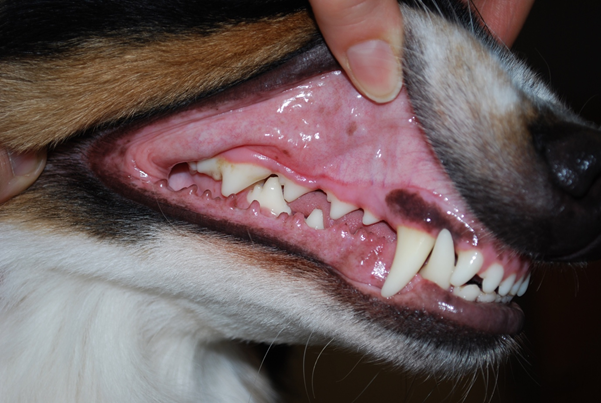Contributed by Isobel Topham, Companion Animal Veterinarian at Green Island Vets in Dunedin.
Greyhounds have teeth.
Kia ora, I’m Isobel, a greyhound owning and loving veterinarian. I’ll be writing on hound health for your enjoyment and education!
Today, we learn that hounds have teeth! :)
These precious cones of enamel and their pink gummy friends are a foundation of health – the blood, tooth roots, and gums share their bacteria, after all! Did you know, it’s recommended not to have surgery if you have ANY dental disease? That’s partly because of those bacteria, which whizz around in the blood and can set up infections elsewhere in the body, damage the kidneys, and cause inflammation, reducing the length and quality of life of your hound. For reasons of genetics particularly, greyhounds are very prone to poor oral health. Most require the whole range of tools and techniques to maintain their teeth, and many need regular cleaning under anesthetic as well. Let’s start with what things should look like, and then move on to what to do if they’re not so pearly whites!
A healthy mouth looks like this:

Any deviation from pearly white teeth and pale pink (or pigmented) gums is abnormal, and should be seen by a vet to make a plan. You’ll see some early tartar on the leftmost tooth here.
My own hound’s teeth, seen through the vet goggles:

So what to do?
My darling girl is going to need her teeth cleaned under an anaesthetic at the earliest sign of redness of the gums – there’s no way my wipes will reduce that hard cured build up. At this stage, the disease is mild enough that the procedure will be just a clean, with maybe some more advanced therapy of the gums to help to slow progress. If I leave it longer than a few months, the damage will be irreversible, and mean we need to take teeth out in the future. For a clean, depending on the size of your hound and how much work needs done, it’s reasonable to pay $400-600, and reasonable to expect to be doing this yearly. If extractions are required, more likely $1-2000+, and the procedure may need to be staged (divided into two or three) if a lot of work needs to be done. YIKES I hear you thinking! Yes, yikes indeed (though, for perspective, for your own wisdom teeth out, budget $5500). Everyone wants to avoid that situation if we can! The answer is… Prevention! An ounce of prevention is worth several thousand pounds of cure:
1) The gold standard for prevention is thorough daily brushing with a dog-specific, enzyme toothpaste. My lady love, Etta, is not a fan. I could teach her to tolerate brushing with a toothbrush or fingertip brush quite easily with clicker training (a post for another day!), but we have a natural compromise in…
2) Oral zinc wipes, which she doesn’t mind. These are like a makeup remover pad, but with anti-bacterial goo on them. A spectacular amount of tartar comes off every day: it’s extremely satisfying, and has done wonders to slow the progression of her dental disease.
3) There is zinc gel to zap the bacteria in hounds who don’t like wipes/brushes on their teeth, which is applied under the lips and massaged onto the teeth via a face rub.
4) Dental chews are ok for the back teeth, though do nothing for the front - better than a poke in the eye, but not enough on their own. I like deer tendons for this purpose.
5) Dental biscuits I find helpful, particularly for the molars, but they don’t do enough for the front. Any soft foods will be worse than dry biscuits. So biscuits are a good part of the program, but not the whole story.
6) Water additives – available, but poor evidence to support their use, probably not going to cause harm, and might help – take them or leave them.
7) Bones… a bone of contention! I am NOT a fan, I have spent too many days and nights of my life trying to save dogs from bones that are perforating their intestines. Yes, bones are natural, and yes, dogs living natural lives die from horrible things happening inside them when they get stuck. For small dogs they can be safer, if they’re not able to crunch pieces off them, but bones still carry the risk of wearing or cracking the teeth, necessitating removal of those teeth. If you must, make sure the bone is raw/frozen fresh, large enough that pieces cannot be broken off and swallowed, chewing time must be supervised, and the bone must be removed as soon as the gristle is finished with. Cleaning the teeth, feeding biscuits, and using a safer chew toy seems a better bet to me!
In summary:
- if it doesn’t look perfect, get it checked.
- prevention is key – daily physical cleaning with something you and your dog can stick with (brush, wipes, combination of chews for the back and cleaning of the front, or gel in a pinch, plus dental food)
- prevention!
- prevention!!!!
- Early intervention – it’s better for your hound’s health to have the teeth examined and addressed under anaesthetic as soon as there’s a problem. The longer you leave it, the longer the anaesthetic, the bigger the risk, and the more major work will need done. A stitch in time saves nine! A $500 clean today saves $2000 of extractions next year.
- Budget accordingly with your time, energy, and money, or you’ll be in a scramble at some point. You have a greyhound - they have teeth!
